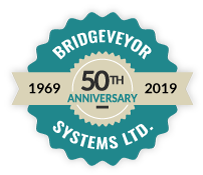How Do You Plan an Overhead Conveyor System? Part 2
In How Do You Plan an Overhead Conveyor System? Part 1 we learned that a number of mitigating factors and answers to certain questions must be considered in the planning stages of a conveyor installation. So much so that, the sooner you get a professional system designer on board, the better.
But that doesn’t stop you from knowing what to consider while you are evaluating the purchase of an overhead conveyor system for your company. In Part 1, we talked about knowing what the conveyor system will transport, including its weight, size and shape, and the type of carrier needed to meet your specifications.
With that in mind, the following planning stages of a conveyor installation are among the other logistics and functionality you need to consider.
1. Conveyor Layout, Path & Elevation
While not too technically difficult, this can be one of the most perplexing steps in your planning. It starts with having a complete floor plan of the entire area(s) through which the conveyor will travel.
You’ll need to identify anything that might interfere with the path of the conveyor. Including support poles and beams, machinery and HVAC equipment.
On the floorplan, draw the most efficient path for the conveyor that you can think of. Avoiding all the obstructions. Remember to mark elevations, where the conveyor must go over work areas or equipment. Including the points at which the conveyor ascends and descends to loading and unloading areas.
2. Production Rate & Conveyor Speed
Basically, you need to know the speed the conveyor must travel, combined with the number of units it carries and the spacing of the carriers, to meet your production requirements. For carrier spacing, remember to consider the space needed to transport units around corners and through changes in elevation.
3. Other Considerations
Your conveyor might require very particular functions that you must take into account. From needing stainless steel carriers to handle food production to transporting metal parts through a paint room and/or washer. Be sure to note them all in your planning.
As we mentioned before, it’s impossible to give you all the particulars you’ll need to consider for your specific overhead system. Hopefully, the points listed above will give you a good basic idea. Of how to start the planning stages of a conveyor installation. While choosing the right system for your application.












